
Today is the birthday of Louis Daguerre, the inventor of the daguerreotype process of photography, one of the earliest successful methods of creating photographs. He was French, an artist as well as a photographer, and “became known as one of the fathers of photography. Though he is most famous for his contributions to photography, he was also an accomplished painter and a developer of the diorama theatre.” When I took some photography classes in college, my great aunt gave me some daguerreotypes taken by my great-grandfather along with some glass plates that I was able to develop in a dark room. There were even a few showing the construction of the clock tower at Kutztown University (his alma mater and near where I grew up in Pennsylvania), which was finished in 1910. Sadly, none of my family daguerreotypes involve beer, since they were for the most part teetotaling mennonites for a majority of the time they worked the farm after arriving here in 1745 from Berne, Switzerland, fleeing religious persecution. I, on the other hand, am such a disappointment (not really, the farm was sold before I was born and they even drove cars and had the occasional beer by the time I was born).
But first, what is a daguerreotype?
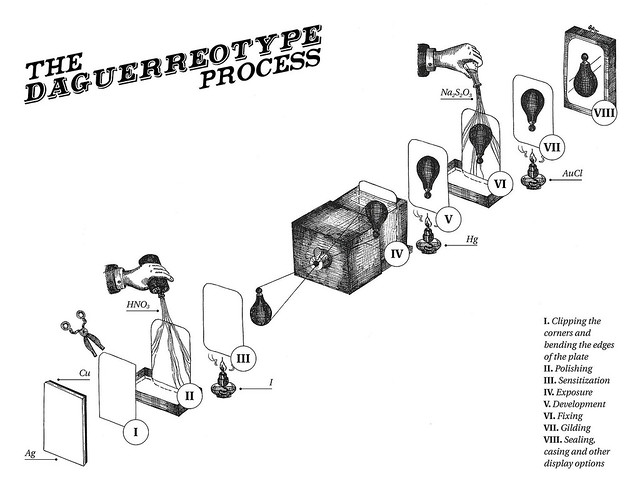
Here’s the basics from the Wikipedia entry:
The daguerreotype process, or daguerreotypy, was the first publicly announced photographic process, and for nearly twenty years, it was the one most commonly used. It was invented by Louis-Jaques-Mandé Daguerre and introduced worldwide in 1839. By 1860, new processes which were less expensive and produced more easily viewed images had almost completely replaced it. During the past few decades, there has been a small-scale revival of daguerreotypy among photographers interested in making artistic use of early photographic processes.
To make a daguerreotype, the daguerreotypist polished a sheet of silver-plated copper to a mirror finish; treated it with fumes that made its surface light-sensitive; exposed it in a camera for as long as was judged to be necessary, which could be as little as a few seconds for brightly sunlit subjects or much longer with less intense lighting; made the resulting latent image on it visible by fuming it with mercury vapor; removed its sensitivity to light by liquid chemical treatment; rinsed and dried it; then sealed the easily marred result behind glass in a protective enclosure.
Viewing a daguerreotype is unlike looking at any other type of photograph. The image does not sit on the surface of the metal, but appears to be floating in space, and the illusion of reality, especially with examples that are sharp and well exposed is unique to the process.
The image is on a mirror-like silver surface, normally kept under glass, and will appear either positive or negative, depending on the angle at which it is viewed, how it is lit and whether a light or dark background is being reflected in the metal. The darkest areas of the image are simply bare silver; lighter areas have a microscopically fine light-scattering texture. The surface is very delicate, and even the lightest wiping can permanently scuff it. Some tarnish around the edges is normal, and any treatment to remove it should be done only by a specialized restorer.
Several types of antique photographs, most often ambrotypes and tintypes, but sometimes even old prints on paper, are very commonly misidentified as daguerreotypes, especially if they are in the small, ornamented cases in which daguerreotypes made in the US and UK were usually housed. The name “daguerreotype” correctly refers only to one very specific image type and medium, the product of a process that was in wide use only from the early 1840s to the late 1850s.

So while I don’t have any daguerreotypes of my own that involve beer, there are a few of them out there, and I’ve selected some of the best ones I came across. A lot of early photographs, as mentioned above, are mis-identified as daguerreotypes when in fact they might be another early photographic process. So the ones I found are identified as daguerreotypes, but of course it’s hard, if not impossible, to be sure. At any rate, this is just for fun, so if you have evidence that one is not strictly speaking, a daguerreotype, let me know, and if you know of one I missed, send me a link to it or as as an attachment.

Munchen Hoffbrau Interior, c. 1896-1905, by Robert L. Bracklow (New York Historical Society).
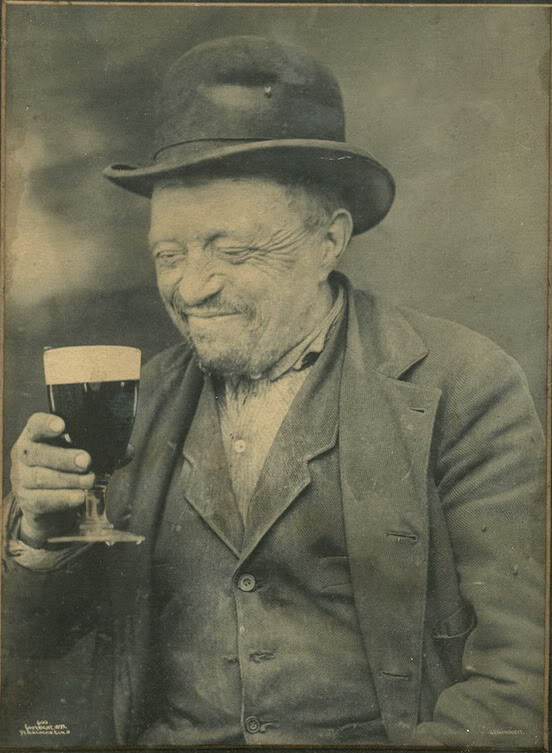
Man with Beer, 1899.
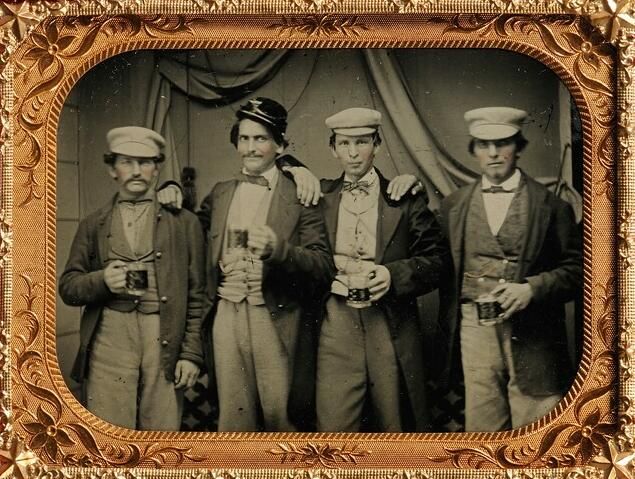
Four men posing with mugs of beer, c. late 1850s.
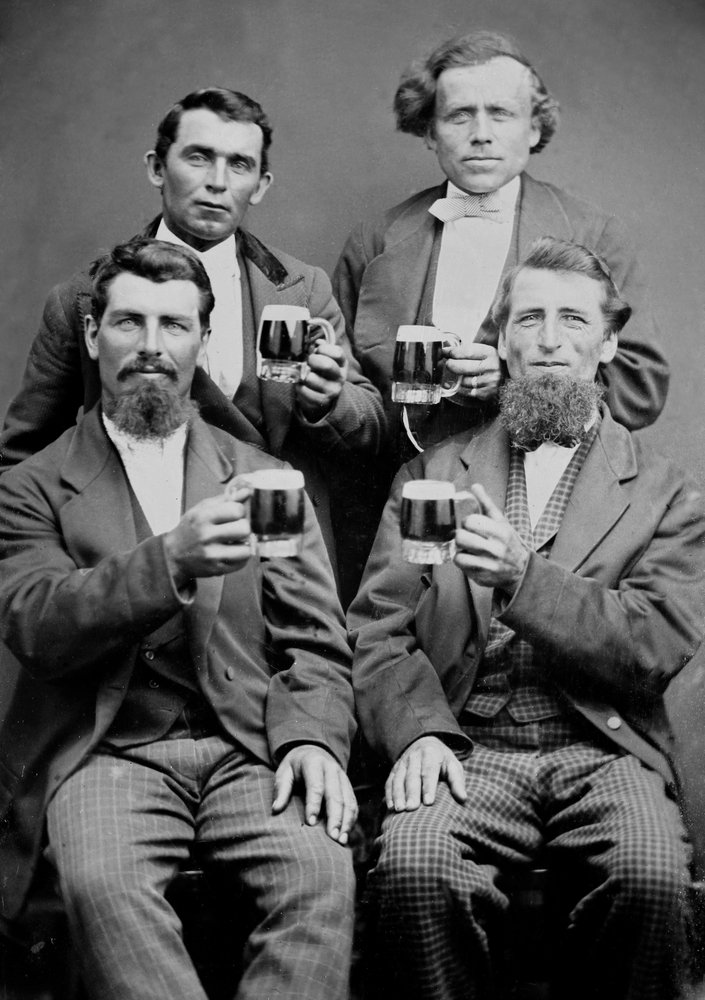
Four [More] Guys and Their Mugs of Beer, c. 1880.

St. Louis Park Beer Garden, South Broadway, c. 1860. Daguerreotype by Thomas M. Easterly.
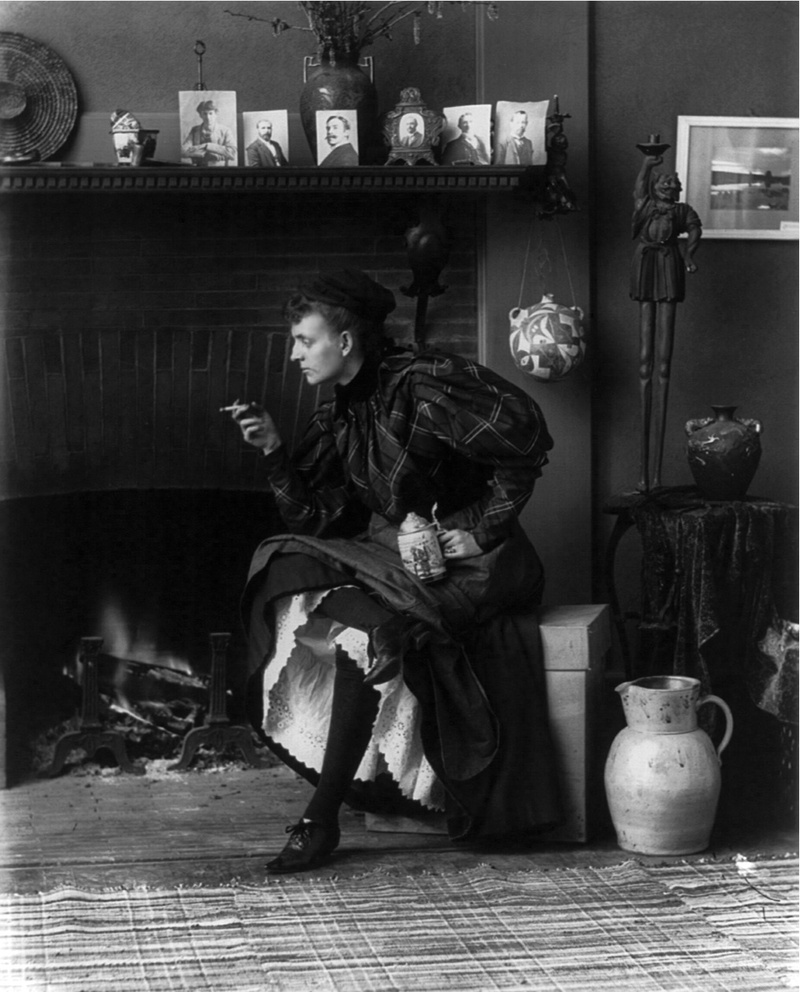
Self-portrait of Frances Benjamin Johnston, from 1896. “Fannie” was one of the earliest American female photographers and photojournalists.

Paper Moon, c. 1910. Paper moon backgrounds appear to be a popular backdrop from photographs at events.

Another paper moon, date unknown.

Thomas Coffin Doane, taken at the Molson family brewery after the fire, in Montreal, Quebec, Canada, 1858.

Union House Bar, Bidwell, California. “A fire destroyed the first Union House (also known as Fitzgerald House) August 2, 1854 along with most of the town. Upon careful study of the dark sign on the right, these are the words: “OFFICE FEATHER RIVER & OPHIR WATER CO”. This company was incorporated Feb. 6 1855. Apparently the second Union House was constructed during the winter and spring of 1855. I believe this daguerreotype was taken in the summer of 1855 after the Union House had been resurrected.”
